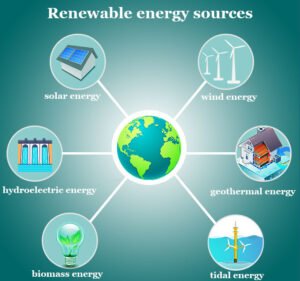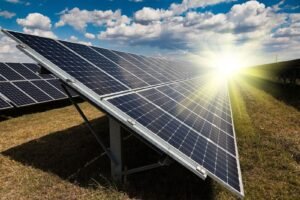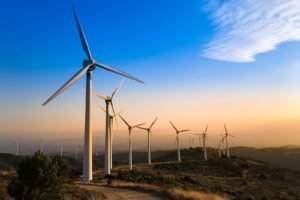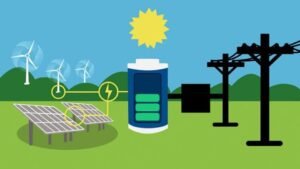Introduction
Climate change is undeniably one of the biggest problems of the contemporary world. Back in 2024 we have felt the results of climate change worse than ever with hurricanes, droughts, more frequent floods, the sea level rise, and the change of ecosystems influencing the lives of millions. However, this year also saw the beginning of a new era in the struggle against climate change due to progressive development of the technologies used in renewable energy sources, as well as to the world’s increasing concern about the future of environment.
The Urgency of Climate Action
The Intergovernmental Panel on Climate Change (IPCC) has been regularly publishing more serious news on the outcome of global warming. As recent data has shown, the globe is moving steadily toward the dangerous 1. 5 degree Celsius overshooting mark from pre-industrial levels in the near future, perhaps the next decade. This would lead to severe and irreversible consequences on the ecosystems, people, and countries’ economies.
As a result, nations, organizations, and societies are ramping up measures and actions to combat global warming. Thus, the Paris Agreement adopted to keep the global temperature below 2 ◦C stays the cornerstone of global climate measures. Though, to realize these objectives, organizations have to undertake exceptional and unite.
The Rise of Renewable Energy
Renewable energy is an important part of the change to green economy on the global level. Furthermore, like it was previously mentioned, in 2024 the use of renewables is more possible than ever and, in addition, more cost-effective as well. Of all renewable energy sources, solar and wind power have realized tremendous cost cut and efficiency enhancements making them some of the world’s most rapidly growing energy sources.

Solar Power
Renewable energy especially solar energy has noted tremendous improvement in terms of acceptance. New technologies in the use of photovoltaic (PV) systems have improved efficiency rates and reduced costs of production. Solar is now the lowest-cost electricity in many areas of the world. New inventions like the bifacial solar panels that harvest light from both faces and the group of BIPV roofs that are incorporated with construction materials are some of the ways through which the application of solar energy is being developed.

Wind Power
Wind energy has also come quite far with advancements made both in the generation, distribution in and utilization of wind energy. Fixed bottom windmills that use the higher and steadier winds over water are common in an offshore wind farm. versatility in usage and the ability to place them in the deeper water area has been made possible through the floating wind turbines. Onshore wind farms grow on, helped by bigger and more effective turbines.

Energy Storage
Renewable energy has another major issue: volatility, or the inability of the sources to provide enough energy at some moments even if there’s demand. Still, the problem of uneven distribution of energy supply and demand is solved with the help of modern developments in battery technologies especially Lithium-ion batteries. Battery storage technology can be utilised at the utility scale to capture extra power produced at some utility scale power plants that are produced at certain periods when the demand for electricity is low and to release this energy when the demand is high hence allowing for a reliable and stable supply of electricity.

Government Policies and Incentives
Successful implementation and promotion in the renewable energy can only be realized through the government support since they are the key players in fostering the provisions and incentives required in the realization of the renewable energy goals. More so, by 2024 most nations are adopting enhanced goals and policies to spur changes towards adoption of renewable energy.
United States
The United States of America is back to serving as a leader in climate change initiatives. The climate plan proposed by the Biden administration entails massive spending into renewable energy infrastructure these are extension of facilities for solar and wind power, expansion of the electric grid as well as support of EVs. Citizen’s incentives such as tax credit, grants, and subsidies are pushing both the business and the consumers to go green.
European Union
The EU is still the global leader through its Green Deal it seeks to make Europe a continent that is climate neutral by 2050 at the latest. The EU is currently putting large amounts of money into renewable energy sources, energy conservation and green transportation. Carbon pricing policies and policies regulating emissions are the fundamental tools for controlling emissions in different industries.
China
Even countries like china that ranks top in the emission of greenhouse gases are making these progress. They have also articulated lofty RE goals with the focus on achieving the maximum carbon emissions by 2030 and carbon-free by 2060. China presently possesses the largest solar and wind energy reserves and its expenditure on clean energy technology is keeping the prices down globally.
Corporate Sustainability and Innovation
Today’s leaders of the global economy are businesses and corporations that are midwifing the shift to clean energy. It is observed that numerous corporations are taking a goal to achieve 100% renewable energy for their facilities and making sustainable investments. Today Google, Apple, Amazon, Microsoft and others are buying renewable energy for their data centers and demanding more efficiency.
There is a great deal of innovation currently taking place within the private sector, where new start-ups and new technologies are already being developed by traditional large corporations. Advanced energy storage, smart grid, renewable hydrogen, carbon capture and their related industries are the underpinning of creating sustainable energy and the private sector is leading all of them.
The Path Forward
Thus, although considerable advances are now being registered, much work still has to be done and more effort is needed, both joint and concerted. Key areas of focus include:Key areas of focus include:
1. Scaling Up Deployment**: Increasing the pace of deploying renewable energy initiatives and structures to cater to the increasing energy demands.
2. Research and Development**: In particular, funding for the development of improved, modern technologies as well as carrying out exploration for new solutions.
3. Policy and Regulation**: Going further in the enactment and improvement of policies and legislation that allowed the expansion of renewable energy sources and the reduction of Green House Gas emissions.
4. Public Awareness and Education**: Sensitisation and creating an informed society on the necessity for the exploitation of renewable energy resources and the conservation of the environment.
Conclusion
The world is stepping forward into the future of the year 2024 towards the proactive fighting of climate change as advances in renewable energy sources continue to be made. This transition to clean energy is imperative to the global climate change impacts as well as the emergence of economic incentives and societal welfare. Thus, it is possible to notice that through the cooperation of governments, companies, and people, the idea of creating a sustainable and resistant world based on renewable energy sources seems more and more realistic.
